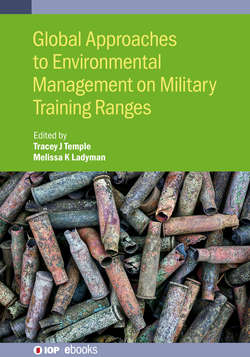Читать книгу Global Approaches to Environmental Management on Military Training Ranges - Tracey Temple - Страница 23
На сайте Литреса книга снята с продажи.
Mass balance
ОглавлениеSoil columns have been used as a standard method to evaluate the fate and transport of various chemicals and contaminants, ranging from pesticides to landfill waste [88, 93–99]. Soil columns are usually vertical tubes containing soil packed at a specific density, allowing the soil to be spiked with a contaminant. There is no standardised format, but the literature suggests best practice for building soil columns with different lengths and diameters, with the largest columns weighing up to 50 tonnes [88].
Columns can be extracted from the ground (monolithic), thus retaining the natural flow path characteristics such as micropores, root cavities and cracks. The method used to extract the monolithic column may influence performance, especially if there is any deformation or compression during extraction. Alternatively, homogeneous columns can be used, which are assembled manually from well-characterised soil samples. Preparation involves full soil categorisation (organic content, pH, particle size, etc), sieving the soil before filling, and tamping the soil in the column to ensure homogeneous packing without voids or inclusions. This method does not simulate the soil structure found naturally, but it standardises the soil structure making columns more reproducible and allowing comparisons to be drawn between different soil types [100].
Soil columns have been used to investigate the fate and transport of explosives in different soils and environments, although there are no standardised methods [56, 80, 101, 102]. For example, soil column experiments have been used to measure the transport of individual explosives through varying soil types with differing levels of organic matter [56], as well as investigation formulations [57, 80]. At the end of the experiment, soil columns are often dissected to enable full calculation of the mass balance to account for all spiked materials and their transport pathways. This would not be possible in the real environment as contamination concentrations are unknown, and the soil is uncontained allowing far greater sideways transport. Although soil columns are not fully representative of the real environment they provide a controlled, reproducible system that can be used to predict contaminant transport rates and pathways.
